
Ah, Alaska. Such a large state. Texas likes to think it’s all that, but it’s not. As the Alaskan’s like to remind the lower 48, if Alaska broke in half, Texas would be the third-largest state. There’s so much to explore and we barely scratched the surface. But we did make it up to Fairbanks after visiting Anchorage.
And because we’re weirdos and were following our friends’ itinerary in hopes of hanging with them as much as possible, we scheduled a few days in Fairbanks in the middle of our Alaska adventure instead of the beginning or end like most sane people. Funnily enough, we didn’t see our friends once in Fairbanks. Explore Fairbanks had suggested far too many things to do. Also, the colds we had picked up in Anchorage had reached their peak (I think our bodies were just waiting to fully give in until after Denali), so we had little desire to do anything more than we absolutely had to. It was all we could do to make ourselves to go on the activities we had scheduled. But we managed.
We didn’t eat super well during our stay, either. Unfortunately, Fairbanks’ vegan scene is a bit lacking. But we did enjoy meals at Sunshine Health Foods’ upstairs cafe, vegan waffles at Little Owl, and falafel at the Sunday farmer’s market. On the upside, there are a coupe good health food stores where you can stock up on essentials (which we did), and get meals to cook at your campsite or hotel.
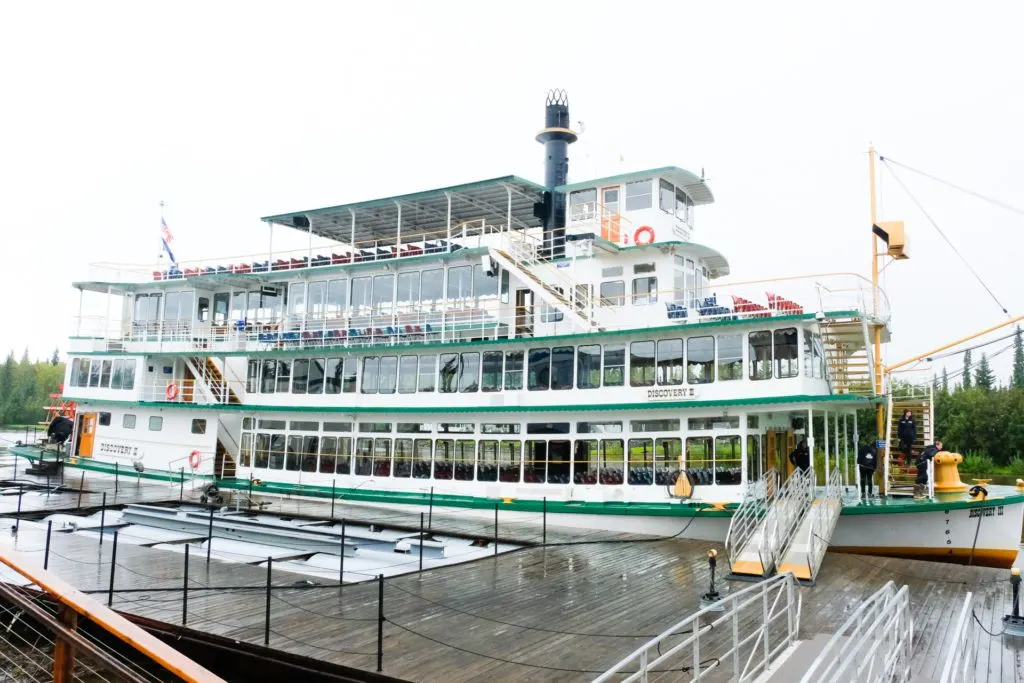
We checked out a Riverboat Discovery cruise, which Ima be honest, wasn’t quite our style, but it did give a nice overview of the culture of the area. It also offered a sneak peek at a dog sled kennel, which I had wanted to see in person before passing judgment on. But after doing so, and after enjoying dinner with a vegan Alaska Native and having a nice long chat about the subject, I decided passing judgement is more than OK.
Here’s the thing: dogs may love to run, especially these dogs, who are bred for it, but as much as kennel owners and mushers claim they treat their dogs like family, as my new vegan Alaska Native friend Edith questioned, do they let the dogs sleep in their bed? Share scraps from their table? Bring them inside when it rains? No. The dogs spend all their time not training on short chains running in circles around their little dog houses, barking their heads off, jumping up and down and generally freaking out. That’s not family.
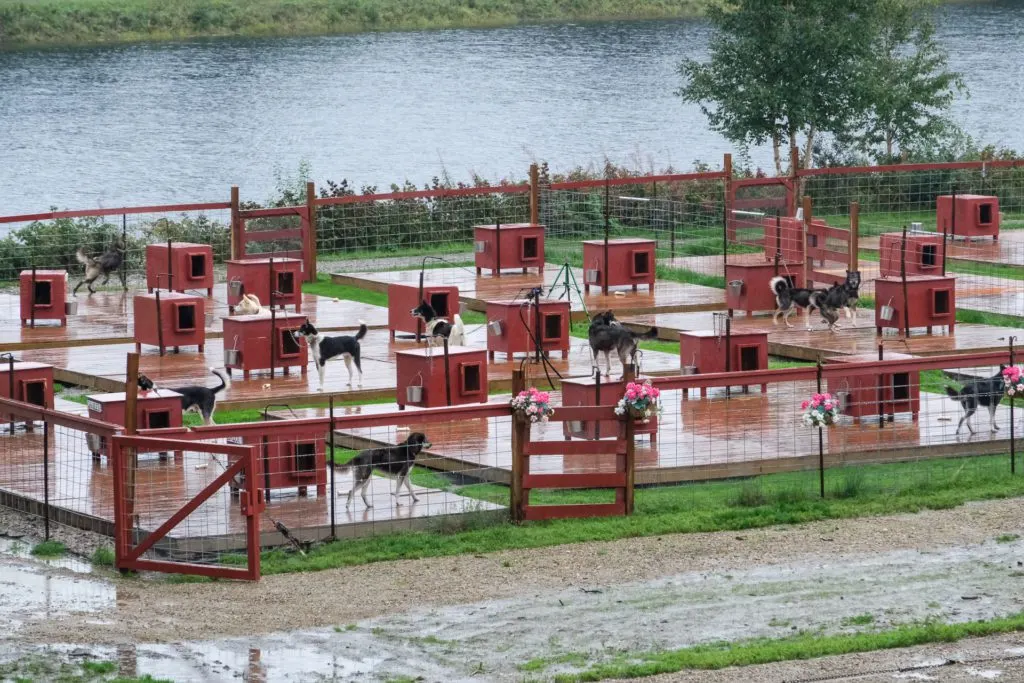
It’s also not history. I was giving the Iditarod a break because I was under the impression it was a native tradition, but if it ever was, it’s not anymore. It’s mostly rich white people who can afford a kennel full of dogs and (mostly) want to compete in the nearly 1,000-mile race, which, I might add, is nothing like what it started as. Historically, that route (and not even all of it) was run to get supplies and medicine to remote villages where trains, planes and boats couldn’t go. The route was run in relays, too, which was safer for man and dog alike in the time before snowmobiles and 4-wheel drive. It turned into a long, gruelling race where dogs die every year in the ’70s when a few folks wanted to preserve the sled dog culture and route. It took three weeks to finish the race from Seward to Nome back then. Now it takes just over 8 days. And it’s largely not Alaska Natives who run the race; it’s European descendants (aka white people like me).
Basically, I’m not holding off on passing judgement anymore. At least as far as the Iditarod and races like it are concerned. Judgement is passed. All the judgement. It’s right up there with horse or greyhound racing: a pointless “sport” that abuses animals so rich people can be entertained for a little while. And because of it, 27 dogs have died in just the Iditarod since just 2004. And the Iditarod isn’t the only race, just the most publicized one. There are others that are equally rough on animals and people alike and just as long.
Rant over.
But the river cruise also talked about the native heritage of the area, the gold mining history, and what life was like for people who lived this far north, including the disproportionately large number of residents who live off-grid.
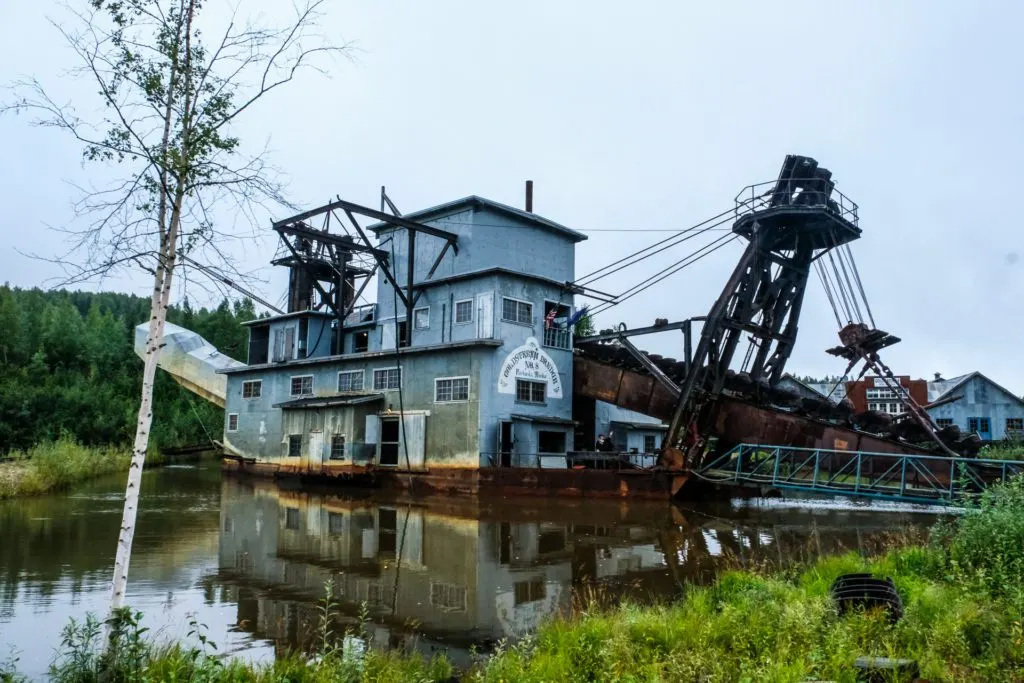
But if it’s gold mining you want, the same company that offers the riverboat cruise also has a tour out to Gold Dredge 8. You take a little train out there, learn about the culture and history of mining in the area, get to walk through the old dredge, and then pan for your own gold. Yeah, they salt the bags of dirt they give you with flakes of gold so you’re guaranteed to find something when you pan, but it’s still kinda fun. And enlightening to experience how long it takes to pan for a few flecks of gold. But afterwards they weight it for you, tell you how much it’s worth (which I imagine is way more than what a dealer would actually pay for the tiny bit we walked away with: a combined $21), then offer the opportunity to buy a locket or some such to contain the flecks. Which we didn’t buy. You know us. Souvenirs? Us? Never!
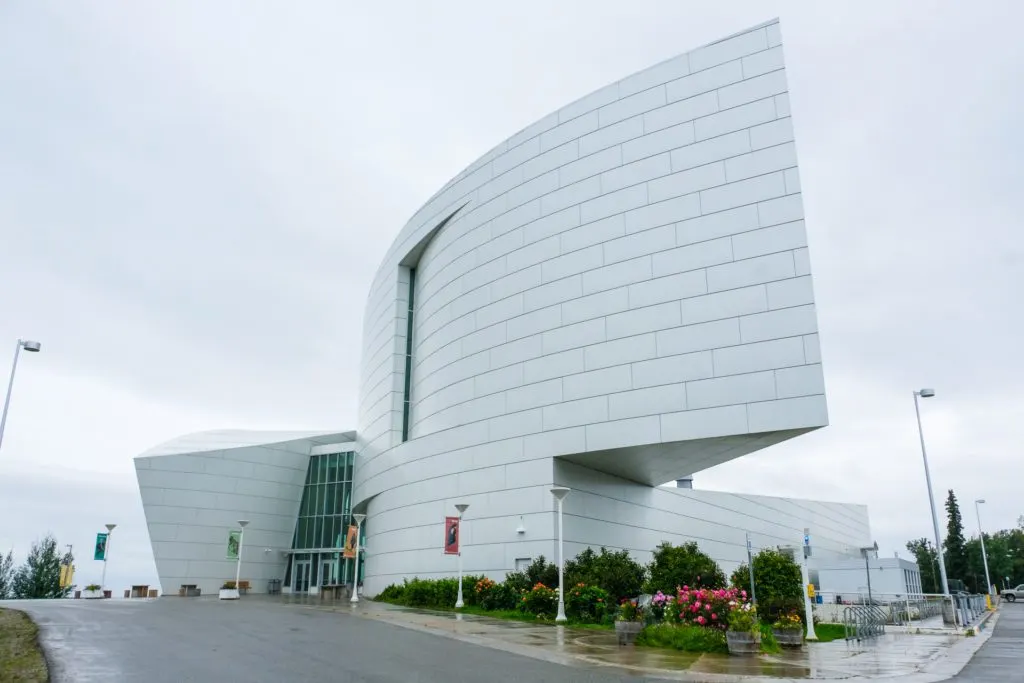
We also paid a visit to the informational Museum of the North, which was also an impressive art gallery, and skipped north an hour to Chena Hot Springs Resort where we soaked in the springs for a while (secretly hoping it would magically heal us from our colds—spoiler alert: it did not), drank appletinis out of hand-crafted ice glasses in the on-site Ice Museum, which was as artistically cool as it was cold, and learned a bit about how the entire resort is geothermal powered. Huzzah for sustainability!
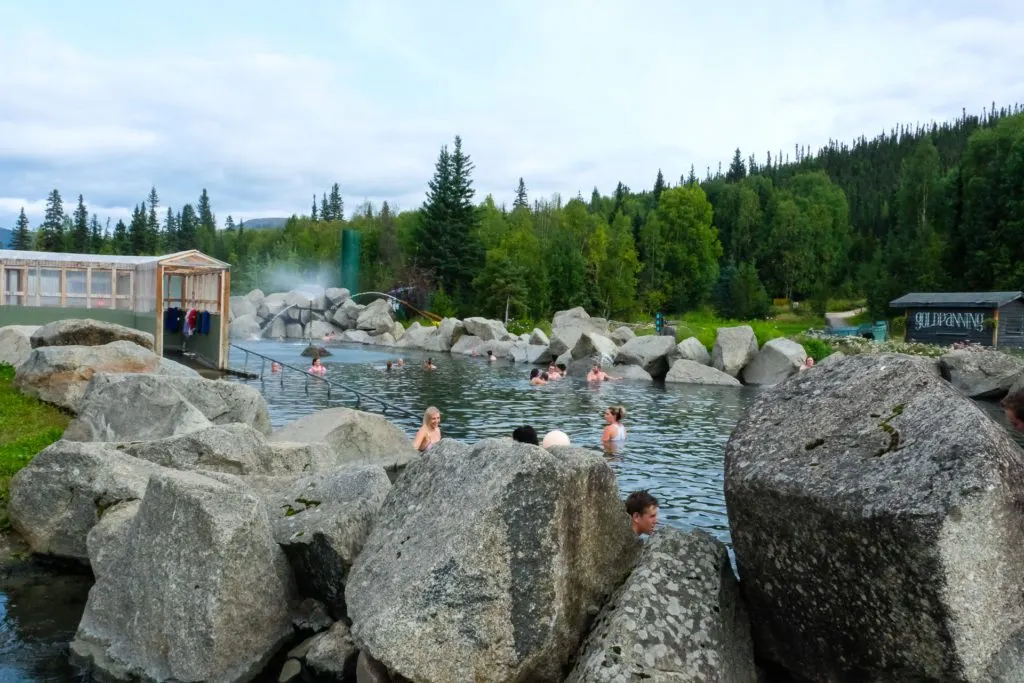
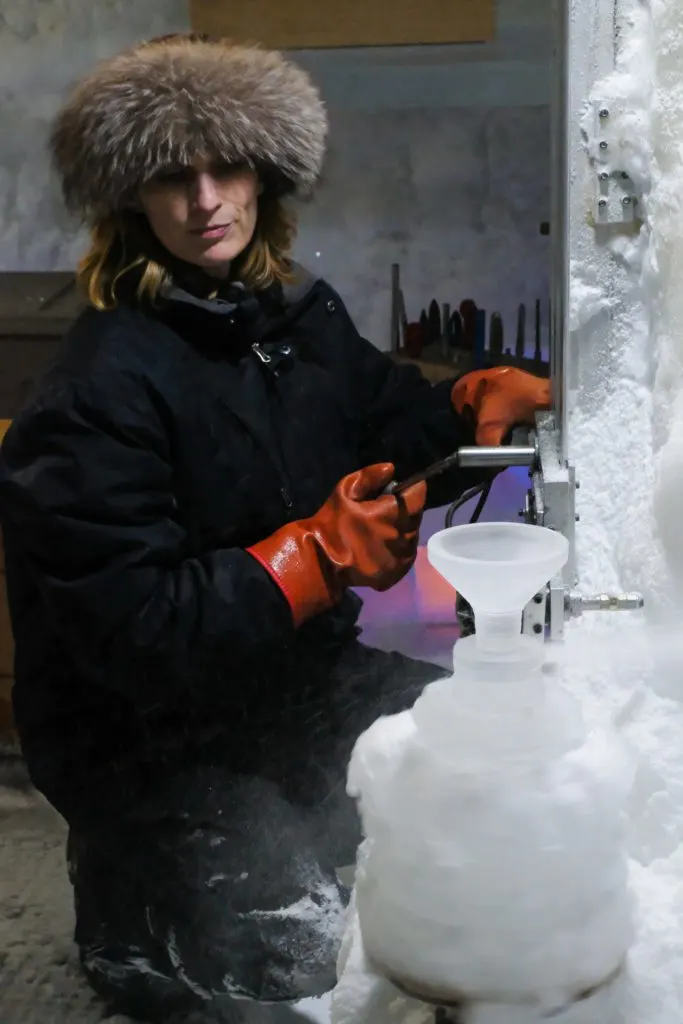
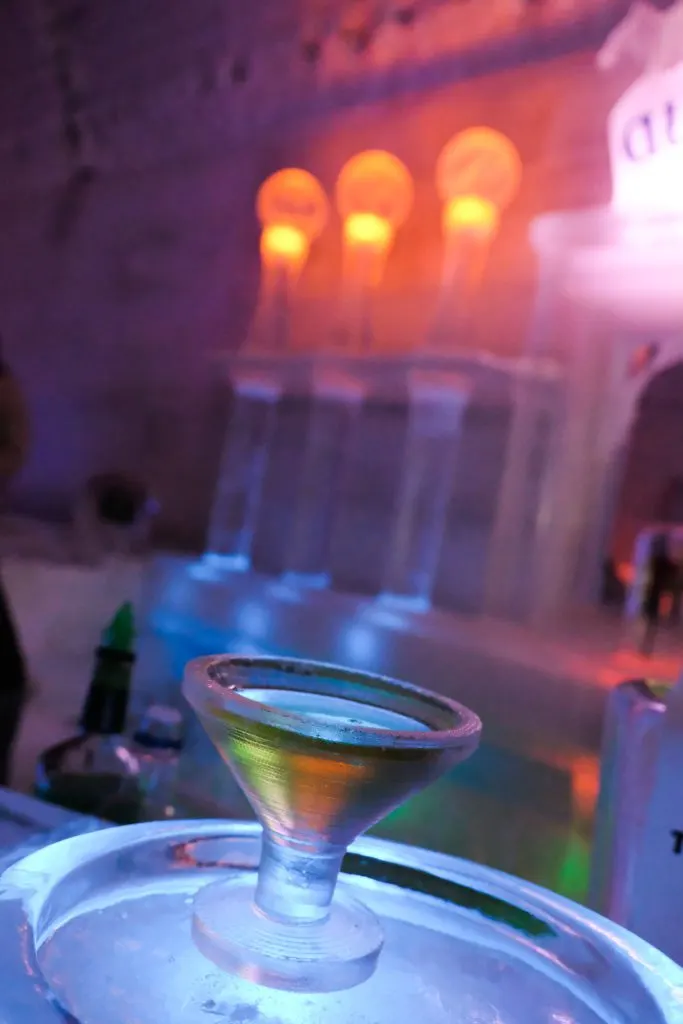
There were also a ton of outdoor activities available on-site, from hiking to ATV tours, but as I may have mentioned, we were ill and wanted none of it. You should have seen us trying to get out of bed the day we left town. It was a struggle.
But turns out, we should have just stayed in bed, because after grabbing a drink and asking some questions at Hoodoo Brewing, we drove four hours back toward Anchorage (it’s six hours away) just to get stuck in traffic. Wildfire traffic. Apparently, there was a wildfire ahead and it had jumped the road, burning on both sides, just hours earlier. The road had closed. We sat and waited to see if they would reopen it. They didn’t. After several hours of waiting, authorities turned traffic around. We tried to decide what to do. The only other way to Anchorage was either all the way back up to Fairbanks and down the very circuitous route to the east that we had come into the state on, or through the unpaved Denali Pass, which I wasn’t at all sure our Prius could handle with her usual aplomb. Either way would take something like 12 hours. Not cool.
So we went back a few miles, found a free campsite along the river, and decided to see what the morning would bring.
We lucked out. They reopened the road in the morning, but only as a one-way with a pilot vehicle for much of it, so we still waited for four hours. In which time I got a fair amount of work done, but still, less than ideal. Fortunately, we had nowhere to be, unlike many of the people who had to be back at work the next morning or had flights or cruise ships to catch out of Anchorage. Bummer for them. When we finally got to go through, there were still little fires burning unattended in patches of woods and brush smouldering everywhere, but even though a few structures had been lost, no one had been killed, so that was a win. And we did eventually make it back to Anchorage, so that was a win, too.
All in all, there’s much more to see in Anchorage, Fairbanks, and the whole giant state of Alaska than we got to see, but we’ll be back. We’ll be back.
Alisha is a freelance outdoor journalist and photographer based in Ogden, UT. She loves backpacking, hiking, mountain biking, kayaking and snowboarding (even though she’s terrible at it). She’s also pretty sure she’s addicted to coffee. alishamcdarris.com
